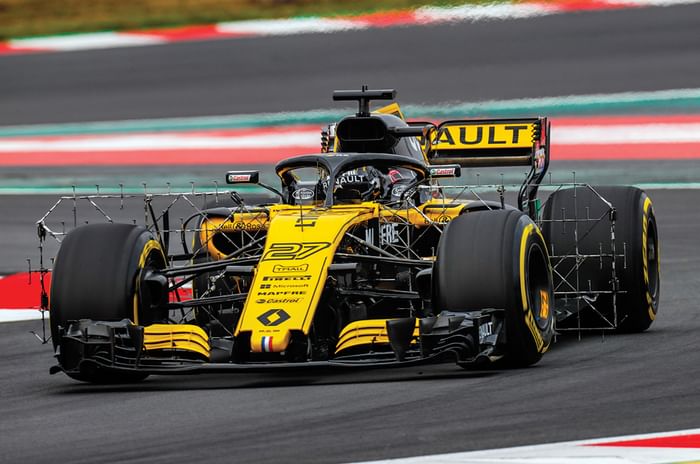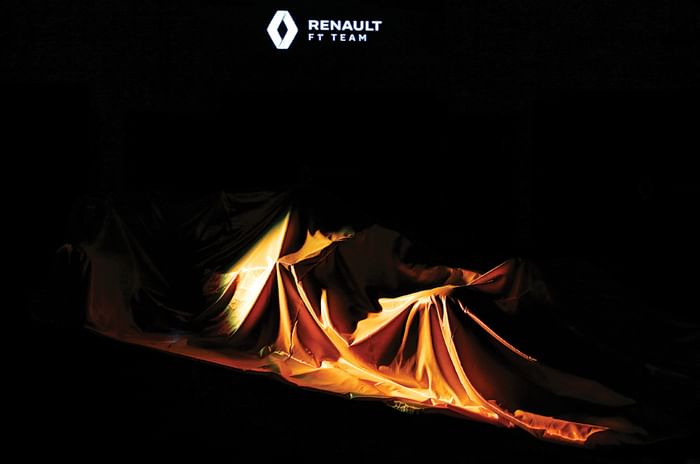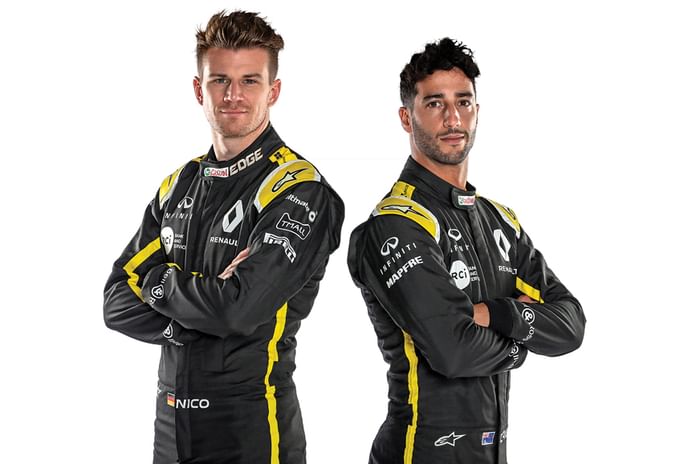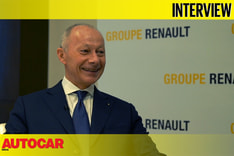Melbourne 2018. Do you remember this race? Possibly not because the opening race of last year’s Formula One season was extremely boring. Or at least it was if you like your races to include lots of overtaking manoeuvres and preferably daring and exciting ones. In that race there were only 15 overtakes. Fifteen in two hours of racing. Only Hungary 2018 ended up with fewer (14). One spectator was not only bored by this lack of drama but also horrified. FIA president Jean Todt realised that immediate action was required.
Overtaking had become difficult because the lead car’s aerodynamics caused such an upset in the airflow behind it, that it made it virtually impossible for the pursuing cars to pass because of the amount of downforce it cost them.

Todt told his technical team to immediately draw up revised aero regulations to solve the problem.
“There’d been no hint of a change,” explains Renault’s head of aerodynamics Pete Machin, ◊ ∆ “which was a bit of a nuisance for us because we’d already started working on our car for the 2019 season. We had to throw everything that we’d done into the bin. Worse still, the new regulations were written in a hurry to meet the April 30th deadline and were full of contradictions. These took many months to resolve, needing unanimous agreement from teams after the April deadline.”
Essentially, the new regulations set out to reduce outwashing of front wheel wakes on the cars. Outwash generated by the front wing and front axle geometries pushes front wheel wakes further outboard and away from the rear of the car for better aero performance. The aero solutions that designers had come up with to manipulate outwash were quite incredible. For example, the front axles were hollow so that air could be channelled through the wheel spindle, through the centre of the wheel nut and out into the air to push front wheel wakes further outboard. The front wings were even more impressive.
“Prior to the new 2019 regulations,” explains Machin, “the rules for front wing design were pretty simple: you were given the dimensions of an imaginary cuboid and all you had to do was make sure that your wing fitted inside that box. It meant that you were free to add pretty much any detail that you wanted. Now, under the new regs, the wings’ dimensions have not only been changed but you are limited to a maximum of five wing elements and fitting a maximum of two under-wing strakes per side. Angle constraints also limit the rate of change of geometry in plan and front views. Never before have front wing rules and regulations been so heavily prescribed.”
As well as the changes to the front wings, there were a multitude of other tweaks to the rules. Those hollow axles had to go and so did winglets mounted on brake ducts that also played a part in controlling front wheel wakes. Changes were not limited to the front of the car; the rear wing was made higher and wider so that the wake or ‘rooster tail’ coming off the back of the car would be higher and helping to lift front wheel wake losses, which are further inboard due to reduced ability to outwash. The following car then enjoys higher energy flow and greater downforce when following.
So with his work on the 2019 car’s aero lying in a dustbin at the end of March 2018, where did Pete Machin and his team start on working to the hastily revised regulations? “Well, rather than throw everything that we’d learnt on the old [2018] car we set about trying to adapt what we already had,” says Machin. “Experience and knowledge gives you a pretty good idea of what you’re going to need to do and which direction to go.”

Machin and his team have two main tools in their arsenal: CFD which stands for Computational Fluid Dynamics, a highly sophisticated computer programme that uses numerical analysis to predict airflow across surfaces of the car. The second tool is the wind tunnel. Put simply, the designers build a computer model of, say, the front wing and then run the software to predict the performance of the wing. Then a model can be made of the part and tried out in the wind tunnel. Sounds reasonably straightforward. But it isn’t.
“In the past,” says Machin, “there were no restrictions involving this work. Today, however, in pursuit of reducing costs in F1, the amount of time that we can spend not only in the wind tunnel but also on CFD are significantly restricted. For example, we’re only allowed to run the wind tunnel a maximum of 65 times in one week (averaged over eight-week periods) whereas when I first started in F1 we were operating the wind tunnel 24/7 and were carrying out as many as 300 tests in a week. We’re also only allowed to make one change of wind tunnel model per 24-hour period.”
Does the FIA have somebody sat outside the wind tunnel with a notebook and stopwatch?
“Not exactly,” says Machin. “But the speed of the fan in the tunnel is recorded and if the airflow goes above five metres per second, that counts as a run. Every eight weeks the FIA analyses our data to check that we haven’t exceeded the time we’re allowed to run the tunnel.”

Appendix 8 is the weighty tome that is F1’s sporting regulations. It clearly sets out all the physical rules that the tunnel itself has to comply with and the models that are used in it. For example, the maximum size of model is 60 percent scale and the maximum airspeed that you can use is 50 metres per second or 112 mph. “You’re allowed to run the moving road under the car at any speed you like but the only reason that we’d run the road at a different speed to the airflow is to simulate the effect of a head or tailwind,” says Machin.
The same monitoring applies to the CFD work, except it is measured not in time spent in front of the screen but in the number of teraflops used. Because both computer simulation and wind tunnel time are restricted, it’s a real skill to judge the point at which you have to stop work on CFD and go to the wind tunnel. “That’s true,” comments Machin, “but CFD is a lot more accurate than it used to be and usually the results that we see in the tunnel are not that different from what we expected from the computer simulation. The same goes for the car’s performance on the track – probably about three or four times a season we get a big surprise. Usually it’s to do with wheel wake.”
“It’s very difficult to achieve the on-track tyre shapes with model tyres in the wind tunnel and difficult in CFD,” explains Machin, “especially with today’s small 13-inch rims and larger tyres because there’s a lot of flex in the tyre and movement as it changes shape at high speed. As the tyre changes shape, so does the wheel wake.”

Throughout the season Pete Machin and his team will be constantly working on the car’s
aero to try and eke out more performance. “We’ll be expecting to see an improvement of about two seconds a lap from the beginning of the season to the car’s performance at the end of it. Engine improvements and aero are the main sources of improved performance but every area of the car contributes, including geometry changes that improve mechanical grip.”
As far as workload and complication are concerned, nothing matches dramatic changes in the rules around aerodynamics. Not even a change of engine supplier or fundamental specification throws the ball so high into the air as a rule change like that introduced for this season. “In 2021 we will have new regulations, dramatically different, to carry on from the 2019 changes to make racing closer. And to reduce costs,” says Machin. Hopefully, these changes will be introduced in a more orderly fashion than 2019’s. Whatever, Machin and his team will be using technical knowledge, experience and all the powerful tools at their disposal to create a winning car.
The 2019 season will see revised aerodynamic rules introduced primarily to boost overtaking. Here’s what’s new:

Front wing
- The front wing will be 200mm wider than last year
- Height sees an increase of 20mm
- It has also been moved forward by 25mm
- Intricately designed endplates have been banned in favour of a more simple design
- Teams are now limited to using only two under-wing strakes on each side
These changes will help pursuing cars follow cars in front more closely
Barge boards
- The height of the barge boards has been reduced by 150mm
- They have also been moved forward by 100mm
Rear Wing
- The rear wing this year will be taller
- Its height has been raised by 20mm
- This will throw the wake of turbulent airflow higher into the air, effectively removing it from the path of a following car
- Its width has also been increased by 100mm
- The width of the DRS opening has also gone up by 20mm, making it about 25 percent more effective compared to last year

Brake Ducts
- Brake ducts will also be a lot simpler, limiting their use as a surface for aerodynamicists to exploit











.jpg?w=234&h=156&q=90&c=1)



.jpg?w=234&h=156&q=90&c=1)





Comments
Member Login
Personal Details
No comments yet. Be the first to comment.